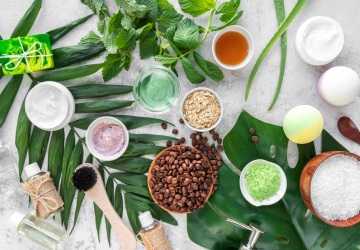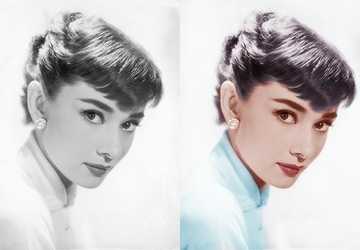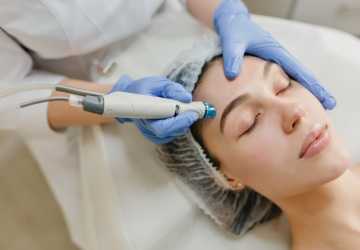Natural hair is beautiful and unique but comes with some challenges and needs. It can be prone to dryness, breakage, frizz, and shrinkage, affecting its health and appearance. That's why taking good care of your natural hair and learning how to embrace its texture and style is essential.
In this article, we will share some of the best natural haircare techniques to help you achieve your hair goals. Whether you want to moisturize your hair, define your curls, stretch your length, or protect your strands, we have a technique for you. These techniques are easy to follow, affordable, and effective! So, let's dive right into it!
Top 10 Natural Haircare Techniques that You Shouldn't Missout
Here are the top 10 haircare techniques that will transform your hair naturally!
Technique #1: Pre-pooing
Pre-pooing, a technique for healthier hair, involves applying oil, conditioner, or mask before shampooing. Damp hair gets natural oil like coconut, olive, or argan oil massaged into the scalp and ends. Cover with a plastic cap for 30+ minutes for better oil absorption. Shampoo and condition after. Ideal for dry, curly, or colored hair, it prevents breakage protein loss and boosts hydration.
Intensive pre-poo with a hair mask also works—leave it under the cap for an hour. Weekly or every other wash application yield softer, shinier, and more manageable hair. Your natural hair will thank you.
Technique #2: Regular Deep Conditioning Treatments
Regular deep conditioning is crucial for strong, hydrated natural hair. Treat every 1-2 weeks with a product suited to your hair type. Apply to damp hair, leaving it on for 30+ mins under a cap for deep penetration. This restores moisture softness and fights frizz. Oils and emollients seal in hydration, safeguarding from damage and strengthening by repairing cuticle imperfections. Expect shinier, manageable hair with fewer tangles and breakage. Prioritize deep conditioning alongside daily moisture for confident, textured hair.
Technique #3: Avoiding Excessive Heat Styling
Limit heat tools like blow dryers, flat irons, and curling irons, which can cause damage to natural hair. Heat styling too frequently can dry out hair, cause split ends, and even lead to breakage. Give your hair a break from the heat at least once a week. On non-heat days, choose protective styles like braids, twists, or updos that do not require hot tools.
When using heat, use the proper heat setting for your hair type and a heat-protectant product. Take sections of hair one at a time, keeping heat tools moving to avoid excessive exposure in one area.

Technique #4: Protective Styling Methods
Protective styles shield hair from damage and boost growth by minimizing manipulation. Braids like cornrows and box braids protect close to the scalp, offering weeks-long relief from daily styling. Quality wigs cover all hair, defending against elements and allowing style changes. Weaves blend extensions with natural hair after braiding, demanding professional application. These styles create intervals for internal hair care.
Using these techniques a few times a month or seasonally can help strengthen your hair over the long run. When you remove the styles, treat your hair to a deep conditioning to keep it moisturized and firm.
Technique #5: Co-washing:
Co-washing, or conditioner washing, gently cleanses hair without stripping natural oils. Apply moisturizing conditioner, massaging into the scalp and strands. Rinse well. Aim for 1-2 times weekly, especially for dry, color-treated, or frizz-prone hair. It elevates natural texture and curls. Choose sulfate-free conditioners with ingredients like coconut oil. Apply section by section, massaging the scalp and rinsing. Initially, hair might feel heavy, but scalp oil production adjusts.
Technique #6: LOC/LCO method:
The LOC or LCO method refers to applying Layering products in a specific Order and using them to Seal in moisture. This popular natural haircare technique helps define curls, reduce frizz, and moisturize hair.
To do the LOC/LCO method:
·Apply a Liquid (L), such as a spray-on or leave-in conditioner. This adds initial moisture and slip.
·Follow with an Oil (O), such as coconut, sweet almond, or jojoba oil. Oils help seal in moisture and prevent hygral fatigue.
·Finish with a Cream (C), such as a curl cream, curl enhancer, or gel. Creams further define curls, reduce frizz, and lock in hydration.
The order of L-O-C or L-C-O depends on your hair's needs and personal preference. Experiment to see which order works best for moisturizing and defining your curls. Performing this technique 1-2 times a week, especially after washing, will have your curls looking their best.
Technique #7: Finger coiling:
Finger coiling involves wrapping hair strands around your finger to enhance your natural curl pattern. This technique helps to define curls, reduce frizz, and add shine.
Technique #8: Pineapple:
Pineapple your hair at night is one of the best ways to maintain your natural curls and prevent damage while you sleep. Gather your hair at the top of your head and loosely secure it with a scrunchie or tie before bed. This helps your curls keep their shape overnight and prevents frizz, tangles, and flattened roots.
Technique #9:Braid-out
Braid-outs are a great way to add texture and waves to your natural hair without heat. To do a braid-out, start with damp or dry hair and section your hair into the number of braids you want. Apply a leave-in conditioner and styling product like gel or mousse to each section before braiding to help define your waves. Tightly braid each section, securing the ends with hair ties.

Technique #10:Bantu knots:
Bantu knots are a great low-maintenance style that protects natural hair for several days. They are ideal for natural hair textures like 3b to 4c that are more fragile. The twisting motion helps reduce stress on hair strands. When you unravel the Bantu knots, your hair will have more definition, moisture, and elasticity. Bantu knots can be worn as a style on their own or used to achieve heatless curls and waves after unraveling. They are a perfect protective style for natural hair.
Conclusion
Now that you've read about the top natural haircare techniques, it's time to incorporate them into your routine. Your hair deserves TLC, and protecting it from damage should be a top priority. Remember that natural hair is beautiful in all its forms. Learn to embrace your texture and the unique qualities that make your hair your own. Take pride in your crown and glory. Your hair will thank you for it. Now go forth and let your natural hair shine through!







